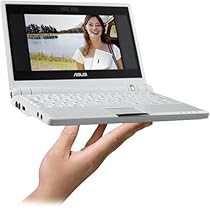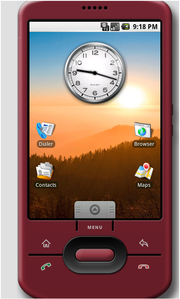The development of new industries and clean technologies is moving fast, surpassed only by introduction of new collaborative on-line networks. Is collaboration from the virtual desktop the future for a whole new sustainability industry?
Tom Worthington is an independent IT consultant and an Adjunct Senior Lecturer in the Faculty of Engineering and Information Technology at the Australian National University. He has been an expert witness in several court cases involving computer issues. After a career in IT policy with the federal government, he was elected a Fellow of the Australian Computer Society for his contribution to the development of public Internet policy in Australia.
Tom teaches the design of web sites, e-commerce and professional ethics at the ANU. He designed the Australian Computer Society's Green ICT Strategies course and is currently designing a ANU Masters course in sustainable computing strategies.
Tom is a past president, Fellow and Honorary Life Member of the Australian Computer Society, a voting member of the Association for Computing Machinery and a member of the Institute of Electrical and Electronics Engineers.
IPCC scientists are recommending a 25% to 50% per cent reduction,in carbon dioxide em missions by 2020. However, the Australian Government is only discussing reductions of 5% to 25%. In any case there is very limited time to install major plant and equipment for reduction schemes involving heavy engineering with power generation and carbon sequestration. Such schemes take decades to design, test and build.
The Clime Group has claimed a reduction of 15% can be delivered just by the use of more effective use of computers and telecommunications (ICT). It may be possible to exceed this limit by the use of on-line collaboration, making use of the heavy investment taking place in computers and telecommunications to effect a change in the way work is done, using existing plant and equipment more effectively.
Research sponsored by the ACS, and others, shows that about 1.5% to 2% of carbon emissions in developed countries are due to ICT. Unless measures, such as those covered in the Green ICT course are applied, this figure is likely to rise. However, even with extensive application of power saving techniques, ICT is unlikely to able to contribute more than a 1% reduction in overall emissions. The larger area for savings is through ICT being used to make other processes more efficient and less polluting.
Better ICT can reduce energy use, reducing greenhouse gas emissions and at the same time lowering costs. The Australian Government is planning to replace interstate travel for some meetings with high-definition video teleconferencing. The Australian Department of Defence has issued a Request for Tender for a virtual reality command centre.
As well as reducing greenhouse gas emissions from air travel, the use of teleconferences will reduce the cost of airfares. This process of "dematerialisation" requires working smarter not just by replacing overstaffed, time wasting face-to-face meetings with on-line ones. A graphic example of the difference is show by the proposed design for the Sydney Metro Operations control centre as compared to the DSTO Future Operations Centre Analysis Laboratory. The Defence Science and Technology organisation is researching designs which need far fewer people to coordinate complex processes, such as running a military operation or controlling a railway.
Social networking web sites, such as Facebook provide a way for people to keep in contact with friends on-line. Web sites such as LinkedIn.com provide similar social networking for business. This is a useful way to keep up with what colleagues are doing and be introduced to people working in similar fields.
To be able to work together, people need to be introduced and know enough about each other to work together. Social networking web sites can provide these introductions, without the need for face-to-face meetings. This can speed up work and remove the need for most meetings and most travel in a project.
Organisations can implement their own social networking software for internal use. An example is the Mahara free open source application, developed by the New Zealand government.
Apart from increasing learning and business efficiency, e-portfolios and social networking can be used to reduce greenhouse gas emissions. Workers will be able to identify human resources for their projects via ePortfolios and arrange the work using social networking.
One practical way social networking can reduce greenhouse gas emissions is by encouraging those going to the same event to share transport and also to arrange additional informal meetings when in a particular location. The combination of the "TripIt" travel planner with LinkedIn is an example of this provides this. Using the information about travel plans provided by TripIt, LinkedIn will issue an alert when your colleagues will be nearby.
The ACS uses online forums for teaching and organisation management. The Australian developed Moodle open source Learning Management System is used for postgraduate teaching. The Moodle system is also used as forum for the educators to communicate issues. Mahara is used for students to create a portfolio of their work to demonstrate they have met the learning objectives through the course.
The social networking features of these systems allow students and teachers to interact for tutorials and projects. This replaces all face-to-face teaching and most staff meetings. In addition the use of social networking is one of the skills the students learn, to apply in the workplace. The students can learn how to use these techniques in a businesslike way, to achieve organizational goals.
For several years I have been teaching my web design students at the ANU to design for a credit card or business card sized smart phone screen. 2010 will be the Tipping Point where this becomes the normal format for business communication. This will change the way business is done as much as the mobile phone, web SMS and email have.
Business and credit cards are limited by the size of the human hand. The screen on a hand held device has the same limitation and is converging on the same size. The iPhone popularized this screen size and other makers are releasing similar smart phones. The price of these devices will drop rapidly during 2010 making them widely available for business.
In portrait mode a iPhone has a Column Width of a newspaper and can display about three paragraphs of text (three column inches, 75 words or 450 characters). Web page designers will therefore need to work to fit meaningful information within this space. Business people will also need to be able to communicate a meaningful message in this space.
Many social networking web sites now have interfaces for smart phones. An example is LinkedIn's http://m.linkedin.com/ (this example was pointed out by Mark Winter, founder of Computers Off). These interfaces not only provide access when out of the office, but are a way to use lower power, lower carbon footprint devices, such as Net-books.
The XHTML interface of cooperative application, such as Moodle, allows them to be used without modification on mobile devices, such as smart phones and net-books. As an example the Green ICT Sustainability course-ware can be viewed on a smartphone.
A good example of what to do is Senator Kate Lundy's Public Sphere #2 – Government 2.0: Policy and Practice. This was a blended online and in-person event, using open source software, blogging, instant messaging and open access to discuss complex policy issues.








